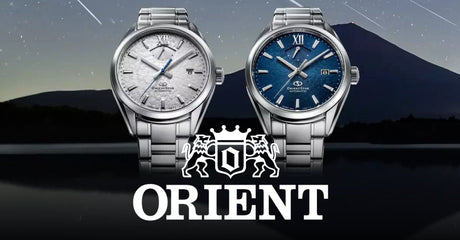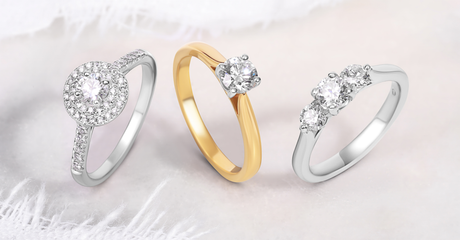Jewellery & Watch News

For over a century, Fabergé has been notorious for creating some of the world’s most beautiful jewellery and of course, the most extravagant Easter eggs. These remarkable objects of art first came to life in 1885 when some of Peter Carl Fabergé’s work was displayed at the Pan-Russian Exhibition in Moscow. Here, Tsar Alexander III witnessed it for the first time and in turn commissioned Fabergé to create an Easter Egg as a gift for his wife, the Empress Maria Feodorovna.
To no one’s surprise, the Tsar’s family was overwhelmed with the beauty and attention to detail of the creation, and it was quickly decided that it would become tradition for Alexander III to gift his Empress a Fabergé Egg every year to come. In total, the House of Fabergé created ten eggs during the reign of Emperor Alexander III and when his son Nicholas II inherited the throne, he commissioned two each year, one for his mother and the second for his own wife, Alexandra Feodorovna. Today, we’re going to be looking at some of the most iconic Fabergé Imperial eggs that were created during this time including the very first Fabergé egg, the legendary Coronation Egg and one of Peter Carl Fabergé’s two last completed eggs, the Order of St George.
The Hen Egg, 1885
The first Fabergé egg designed for Tsar Alexander III, the 1885 Fabergé Hen Egg, was an extension of the Russian Orthodox tradition of exchanging decorated eggs at Easter and showcased a gorgeous white enamel shell. On opening the egg, it reveals a gorgeous centre of 18 carat gold and a round of “yolk” with a matte finish. The yolk itself then opens up to reveal a gorgeous golden hen resting in a bed of suede-edged stippled gold designed to mimic the straw of a hen’s nest. Cementing their reputation for surprises, the Fabergé Hen continues to open up thanks to a hinge on the tail feathers. Inside the hen is a miniature version of the Russian imperial crown crafted from diamonds and rubies, holding a small ruby pendant egg. This Fabergé egg is now a part of the permanent collection in the Fabergé Museum in Saint Petersburg, Russia but you can find several designs in today’s Fabergé jewellery collections inspired by it including this gorgeous Fabergé Palais Tsarskoye Selo Hen Surprise Locket.
The Renaissance Egg, 1894
The beautiful Fabergé Renaissance Egg, sometimes known as the “casket-egg” was the last Easter present gifted to Maria Fedorovna from Alexander III, who passed away in October of 1894. Its opulent design took inspiration from an 18th century oval agate casket designed by Dutch master LeRoy. The casket was held in the Grünes Gewölbe Museum in Dresden, where Carl Fabergé studied as a young man. The egg beautifully advanced the casket’s design with a cloudy agate construction coated with opaque white enamel. On the top, a trellis of gold, a quatrefoil of diamonds and an abundance of rubies delivered an exceptional level of decoration and sparkle. In the very centre is the date of its creation, 1894, set in rose diamonds.
The Rosebud Egg, 1895
A year after the Renaissance Egg, shortly after Alexander III’s son Nicholas II took over the throne, Peter Carl Fabergé was asked to continue his father’s tradition and create an egg for Empress Alexandra Feodorovna, Nicholas’ new bride. The perfect embodiment of spring and Easter time, the Rosebud Egg is home to a gorgeous rosebud surprise at the centre decorated in opaque yellow and green enamel. The flower sits within a mesmerising translucent red guilloche enamel egg decorated with bands of rose-cut diamonds and strands of gold. At its apex, the egg also showcases a miniature portrait of Emperor Nicholas II under a table-cut diamond and at its base, the date 1894. Lovers of the red enamelled egg may like to explore some similar designs in the Fabergé Palais Yelgain jewellery collection here.
The Coronation Egg, 1897
Explorers old and new to the history of Fabergé’s eggs are likely to have heard of the Coronation Egg more than any other. Its prominent design was presented by Emperor Nicholas II to his wife, Empress Alexandra Feodorovna, as a souvenir of her entry into Moscow on May 26th, the day of their Coronation in the Uspensky Cathedral. Upholding Peter Carl Fabergé’s famous techniques, the exterior is dressed in translucent gold enamel and adorned with black enamel eagle heads inspired by the robe worn by Alexandra at the ceremony. While the exterior is beautiful, inside is one of the most intricate and breathtaking surprises Fabergé has ever created: a diamond set enamelled gold replica of the original 18th century carriage by Buckendahl detailed with an emerald drop.
The Duchess of Marlborough Egg, 1902
It was only recently that Fabergé started their journey into the world of luxury watches, but their history with timekeeping goes back much further than that. This Duchess of Marlborough Egg, also known as a Fabergé clock egg or the Pink Serpent egg, is one of just a few “non Imperial” eggs designed by Peter Carl Fabergé. It was ordered by Consuelo Vanderbilt, Duchess of Marlborough for her visit to Russia in 1902 and inspired by another clock egg, the Fabergé Blue Serpent Egg, made for the Dowager Empress in 1895. It also remains the only large Fabergé egg to have been commissioned by an American. Its design features a gorgeous pink guilloche coating with hour numbers picked out in diamond around the girth and sensual snake marker for the hour hand.
The Order of St George Egg, 1916
Last but certainly not least on our journey across Fabergé’s history is that of the Fabergé Order of St George Egg. This is one of Peter Carl Fabergé’s last completed eggs and was presented by Emperor Nicholas II to his mother, the Dowager Empress shortly after the onset of The Great War. Its crisp white finish was crafted purely from matte opalescent white enamel, showcasing no further embellishments due to the rarity of precious materials at the time. Ribbon-like detailing in gold decorates the edges while two miniature portraits of Nicholas II and of his son, Alexei are concealed beneath the Badge of the Order of St. George and a silver medal of the Order. This order was presented for great bravery on the Front and bestowed upon the Emperor on October 25, 1916. The Fabergé Order of St George Egg is the only egg that left Russia during the Revolution, accompanying the Dowager Empress into exile.
Today’s Collections of Fabergé Egg Jewellery
It’s clear to see with just one glimpse at Fabergé’s modern collections of jewellery that each and every design takes inspiration from their history. The same traditional, often complex, materials and techniques such as enamelling, hand graving, invisible setting and intricate pave work make up the signature elements of their designs with the famous egg motif showcased predominantly within the collections. The Fabergé Heritage jewellery collection in particular tributes the original Fabergé Imperial Eggs created by Peter Carl Fabergé for the Russian Imperial Court. You can shop this series and more Fabergé egg jewellery on the C W Sellors website here.










